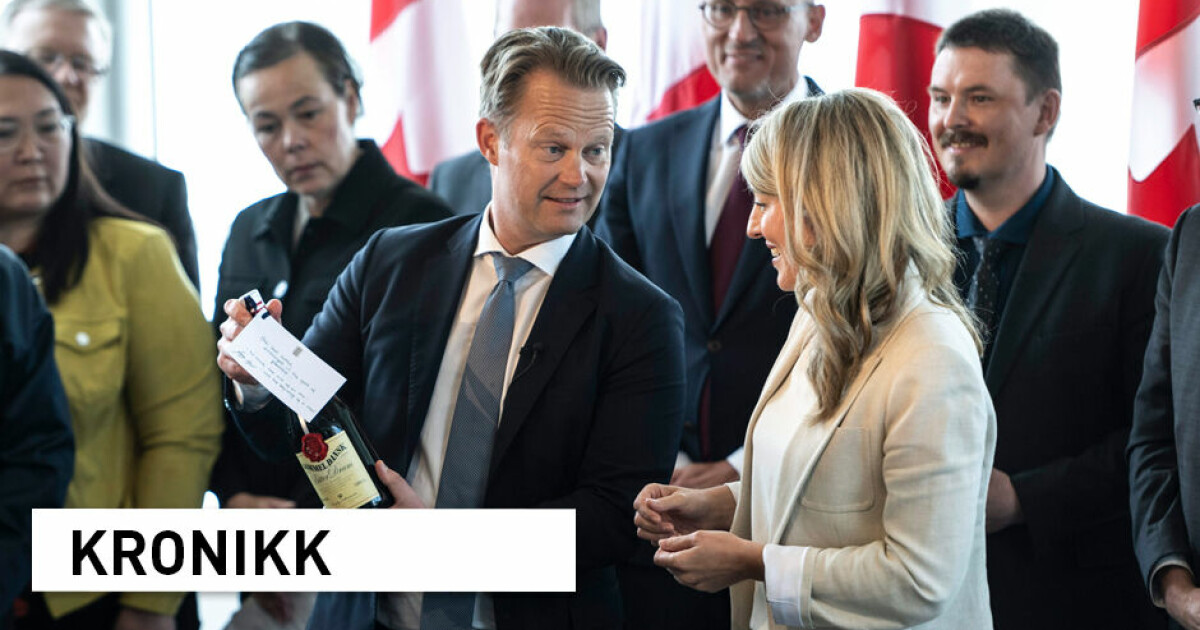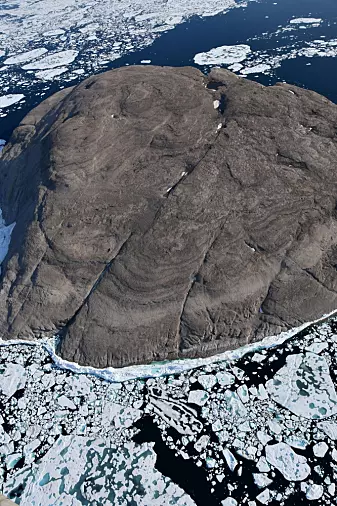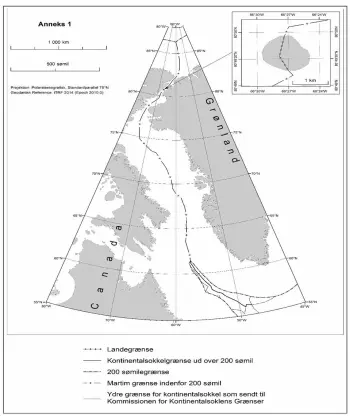CHRONICLE: For years there has been a positional war between Denmark and Canada on an island between Greenland and the mainland.
For nearly a hundred years, Hans øy (Hans Island) has been the subject of a sovereignty dispute between Denmark (Greenland) and Canada, and since the 1980s the sides have been fighting a war of position armed with whiskey and of schnapps. Tuesday June 14 at 20 Norwegian time, Canada, Denmark and Greenland have signed one watershed agreement which resolves the long-standing border dispute between Canada and Denmark (Greenland).
The agreement is a comprehensive agreement that involves a solution to the sovereignty dispute over Hans Island and provides for a final delimitation of maritime areas within 200 nautical miles in the Lincoln Sea northwest of Greenland and the Labrador Sea. southwest of Greenland.
In accordance with the Seafood Act
It follows from United Nations Convention on the Law of the Sea that States are free to agree on how they wish to proceed with the geographical delimitation between themselves and that the main objective is to reach a fair and reasonable solution. Beyond that, the Convention on the Law of the Sea does not define any other guidelines on how the boundary should be determined. Through case law, however, a three-step model for maritime demarcation has been developed.
This model is based on a mathematically calculated center line, measured from each of the states’ coasts. The median line is then adjusted in light of other factors that the parties consider relevant to the boundary.
These relevant factors may, for example, be geographical factors, such as the shape of the coastline and the presence of islands. There may also be non-geographical factors that come into play, such as the economic activities and interests of the parties in the region.
With this, Canada gained its first land border with Europe.
After the mathematical center line has been adjusted in light of the relevant factors, a “proportionality test” is finally carried out, during which it is examined whether the adjusted center line could lead to an unreasonable or unfair result for any of the parties , in particular with regard to the ratio between the length of the coastline of each country and the size of the maritime space allocated to them at the border. Although the three-step method is primarily developed for use in cases where the boundary dispute is to be decided by a court, in practice it is also often used by states negotiating an out-of-court boundary line agreement.
A final solution to the whiskey war
Hans øy is a 1.3 square kilometer uninhabited limestone island located in the Kennedy Channel in northwest Greenland. When Canada and Denmark (Greenland) signed a treaty in 1973 that defined the boundary between them in the Kennedy Channel, they could not agree on who had sovereignty over the island. The 1973 border agreement therefore explicitly states that there is no border between border points 122 and 123, where Hans Island is located.
Since 1984, the island has been the subject of the so-called “Whiskey War”, where Canada planted a flag on the island and left behind a bottle of Canadian whiskey. When Tom Høyem, Minister for Greenland, visited the island later that year, he planted a Danish flag and left behind a bottle of Danish schnapps and a letter saying “Welcome to Danish Island”. Despite the humorous tone, the parties have not been able to agree on sovereignty over the island in the past. The island itself has little economic value, and since the maritime zones of the parties in Kennedy Sound were already established in 1973, the division of the island does not have much real significance. The Kennedy Canal could, however, become interesting for international shipping if global warming allows new shipping routes to the Arctic Ocean.
In the border agreement signed on June 14, the parties finally reached an agreement on the sharing of Hans Island. The negotiations took place behind closed doors and we do not necessarily know which considerations the parties placed decisive emphasis on. However, the agreement divides Hans Island in two between Denmark (Greenland) and Canada. The boundary is apparently drawn along natural canyons on Hans Øy, a method of division we recognize from both the Law of the Sea and other land disputes, and gives Denmark (Greenland) sovereignty over a slightly larger share big on the island. With this, Canada gained its first land border with Europe.
79,000 km2 with overlapping claims in the Labrador Sea
In addition to finally finding a solution for Hans Øy, Canada and Denmark (Greenland) have also made the final demarcations between them in the maritime areas southwest and northwest of Greenland, where they have no could not reach an agreement in the 1973 agreement.
According to the United Nations Convention on the Law of the Sea, coastal states have the right to establish an economic zone outside their coast, with an extent of up to 200 nautical miles from the baseline. Moreover, States’ right to the continental shelf may extend well beyond this distance. In the Labrador Sea, which stretches between Newfoundland and Labrador in Canada and Greenland, this meant that Canada and Denmark (Greenland) had overlapping claims in an area of up to 79,000 square kilometers. , an area that is now divided between the parties. .
The context of the chosen solution was not communicated by the parties. However, the official map suggests that the boundary has been drawn on the basis of the median line principle, with some adjustments that take into account the interests of the parties in the area and relevant considerations. The sharing methodology appears to be consistent with case law and state practice.
Indications of the future division of the Arctic Ocean
Also to the north, Canada, Denmark and Greenland have managed to confirm a common divide in the Lincoln Sea. The border is based on a 2012 Interim Border Agreement, which is now included in the legally binding Boundary Line Agreement between Canada and Denmark (Greenland).
In the Lincoln Sea, the parties apparently dealt with a mathematically calculated median line between the coasts of the States. This sends a very important political signal and indicates that Denmark (Greenland) and Canada intend to agree on a middle ground also further north in the Arctic Ocean, where Danish and Canadian claims to the shelf overlap with Russia’s claim to ownership of the seabed.
Great geopolitical importance
Resolving the sovereignty dispute over Hans Island is not only about determining where the border should go, but also about laying the foundations for broader cooperation between Canada and Denmark (Greenland), which is particularly important for the Inuit population of Nunavut and Greenland. The agreement on Hans øy therefore has not only symbolic value, but also great practical and real significance. For this reason, cooperation between states is also explicitly included in the demarcation line agreement.
The border agreement is signed shortly after Canada, Denmark and five other Arctic states decided to resume Arctic cooperation in the projects of the Arctic Council without Russian participation. At a time when the international legal order is under pressure and when international law and concluded treaties are constantly questioned, it is a positive sign and a clear signal that the Arctic States of Canada and Denmark (Greenland ) demonstrate a willingness to dialogue and a capacity to find solutions within the framework of the Convention on the Law of the Sea system and in accordance with the Ilulissat Declaration of 2008.

“Tv guru. Analyst. Lifelong alcohol junkie. Friendly bacon specialist. Twitter nerd.”









